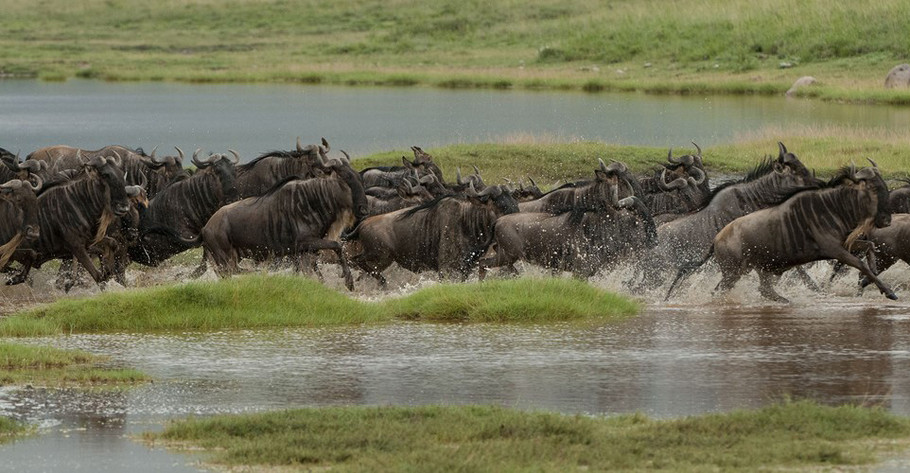
Bonn / Laramie, 4 September 2024 - Today, a groundbreaking online map was launched showing the migration paths of land animals around the world. An international team of over 80 scientists has collaborated to create the first-ever interactive migration map of hooved mammals such as antelopes, guanacos and zebras, that routinely travel large distances at different times in the year. Such animals are collectively called “ungulates".
Known as the Atlas of Ungulate Migration, the tool uses the best available science to provide up-to-date migration maps. In addition to providing scientific information, the tool will be invaluable in informing conservation planning, infrastructure development, and policymaking to enhance ecological connectivity. The new interactive map currently covers 20 global populations, ranging from the iconic Serengeti wildebeest and African elephant, to the saiga of the Central Asian steppe.
Developed under the auspices of the Convention on the Conservation of Migratory Species of Wild Animals (CMS) – a biodiversity treaty of the United Nations – the researchers analyzed tracking data to produce the new digital atlas. The online tool was developed through the efforts of the “Global Initiative for Ungulate Migration” (GIUM), established in 2020, representing a consortium of scientists and institutions worldwide. The maps will be made freely available to governments, conservationists, and the public.
“Knowing the routes used by animals for their migrations is essential to better understanding what we must do for their conservation and management. The Atlas will be a significant tool for policymakers to achieve their biodiversity objectives as well as addressing the needs of communities for development.”
Amy Fraenkel, CMS Executive Secretary
Around the world, ungulates such as the Argentine guanacos, the Alpine ibex, and the Mongolian gazelles migrate across vast distances to find food, escape harsh weather, and raise their young. Ensuring their ability to migrate is vital for their survival. A variety of such animals provide benefits for human needs and national or local economies, from tourism, as a source of food, and through the transport of nutrients and other functions.
“This atlas represents a major milestone for conservation worldwide, and we believe the migration maps will be a tangible and effective tool to help stem the loss of the world’s ungulate migrations.”
Matthew Kauffman, a wildlife biologist with the U.S. Geological Survey (USGS) and the University of Wyoming, and a member of GIUM’s scientific advisory board
At the CMS 14th Conference of the Parties (COP14) in February 2024, the United Nations released the first-ever State of the World’s Migratory Species Report, which found that 44% of migratory species listed under CMS are in decline, largely due to human activity.
As human populations grow and development expands, migratory ungulates face a myriad of threats. These include habitat fragmentation from fences, roads and railways, overexploitation from poaching, and climate change. These combined pressures are outpacing animals’ capacity to adapt and the conservation community’s ability to respond. GIUM’s work is timely, offering data that can help tackle these threats more effectively.
“We have reached an environmental tipping point where it’s more urgent than ever to have sound data to pinpoint exactly where to direct conservation efforts that can make the most impact for migratory wildlife.”
Grant Hopcraft, conservation ecologist with the University of Glasgow and member of GIUM’s scientific advisory board
The Central Asian region, for instance, harbors the largest intact and still interconnected grasslands worldwide. But it has also seen a steady development with the expansion of infrastructure, including railways and new trade routes. The atlas shows how a railway construction impacts the Saiga Antelope’s movement, cutting them off from critical winter habitats. Researchers believe that by studying animal movements, solutions can be found that balance development with conservation.
Share: